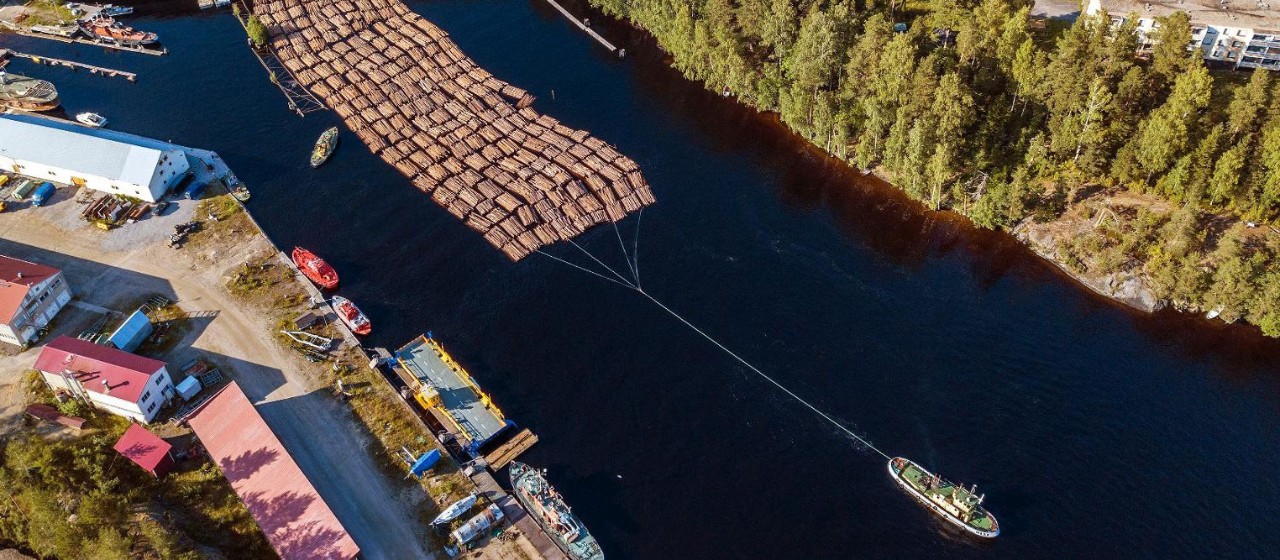
Timber rafting with a Scania DI16 engine
19 AUGUST 2020
When this season ends in November, captain Reino Nurmi will have transported some 450,000 cubic metres of wood in Finland’s Lake Saimaa with his faithful tugboat M/A Olli. That equals some 8,000 truckloads. During Nurmi’s 46th season, Olli’s Scania 16-litre DI16 engine will accumulate more than 3,000 operational hours.
“M/A Olli is quite agile and tows well. It’s also good in shallow places when vessels cannot have much draft,” says Nurmi.
Timber rafting was the principle mode of transporting logs in Finland until the 1960s, when its popularity waned and nowadays it is only practiced on Lake Saimaa. But rafting still makes good sense as the cheapest and by far the most environmentally sound mode of moving timber. Besides the transport itself, the logs are less subject to harmful insects in water.
Timber rafting is very much the antithesis of modern-day transport, moving at a slow and unhurried pace of 2 km/h. The logs are usually picked up in North Karelia and North Savo and transported as far as 450 kilometres, taking many days. The largest towed batches are over 30,000 cubic meters, with a floating load of more than one kilometre in length.
“We aim to have over a thousand bundles per trip. In comparison a truck normally takes about three bundles of logs.”.
Towed by Olli, the logs are bundled with nine bundles always moving in parallel. There is also an auxiliary vessel that pushes the float in narrow places and helps keep the load together.
“We've got to anticipate everything,” says Nurmi. “We monitor the weather forecast for strong winds. We have certain safe spots to stop and wait long enough to the weather to calm.”
Back in 1974, Nurmi worked at a paper mill, a job he did not really enjoy. “The district manager for timber rafting worked next door and I went to see if I could get a job from him. He said that he could promise work for one summer, but not any longer. That summer has lasted quite long now.”
Photo credit aerial photo: Maaseudun Tulevaisuus / Lari Lievonen